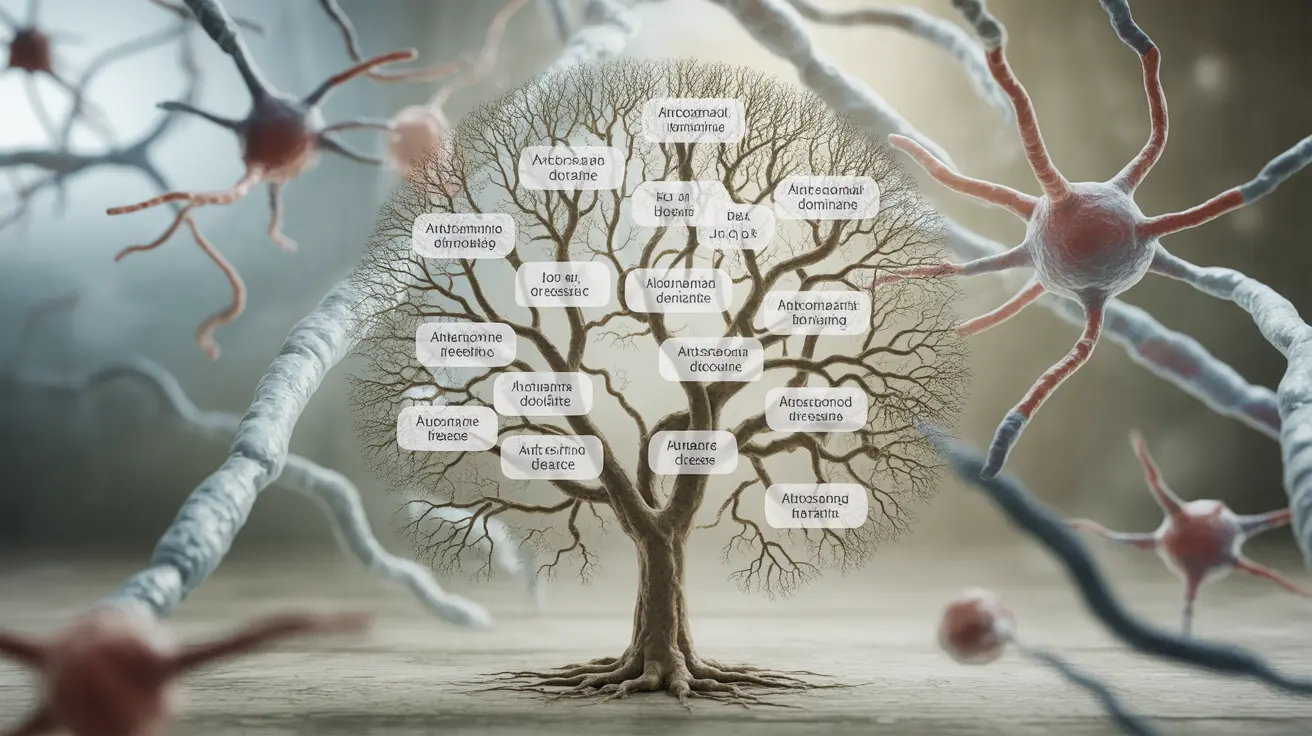Amyotrophic Lateral Sclerosis (ALS) is a complex neurodegenerative disease that can have both sporadic and inherited forms. Understanding the hereditary patterns of ALS, particularly its potential to be passed down through generations, is crucial for families affected by this condition.
While most cases of ALS occur spontaneously (sporadic ALS), about 10% of cases are familial, meaning they're inherited. The inheritance patterns can be intricate, leading many to question whether the disease can skip generations or be passed down from grandparents even when parents appear unaffected.
Types of ALS Inheritance
ALS inheritance typically follows several distinct patterns, each with its own characteristics and implications for family members:
Autosomal Dominant Inheritance
The most common form of inherited ALS follows an autosomal dominant pattern. This means that only one copy of the altered gene from either parent is needed to potentially develop the condition. In these cases, each child of an affected person has a 50% chance of inheriting the gene mutation.
Other Inheritance Patterns
Some forms of ALS can follow different inheritance patterns, including:
- Autosomal recessive inheritance
- X-linked inheritance
- Complex inheritance involving multiple genes
Understanding Generational Transmission
The concept of ALS "skipping generations" is complex and can occur due to several factors:
- Reduced penetrance: Some people may carry the gene mutation but never develop symptoms
- Variable expressivity: The severity and age of onset can vary significantly among family members
- Environmental factors that may influence gene expression
Genetic Testing and Family Planning
Modern genetic testing has revolutionized our understanding of familial ALS and provides important options for families:
- Diagnostic testing for individuals showing symptoms
- Predictive testing for asymptomatic family members
- Genetic counseling to understand inheritance risks
- Family planning decisions with medical guidance
Risk Assessment and Management
Understanding your personal risk for inherited ALS involves several factors:
- Detailed family history analysis
- Identification of specific genetic mutations
- Regular medical monitoring for at-risk individuals
- Lifestyle modifications that may impact disease onset or progression
Frequently Asked Questions
Can ALS be inherited from my grandparents even if my parents don't have the disease?
Yes, ALS can be inherited from grandparents even if parents don't show symptoms. This can occur due to reduced penetrance, where someone carries the gene mutation but doesn't develop the disease, or through other complex inheritance patterns.What does autosomal dominant inheritance mean for the risk of familial ALS in my family?
Autosomal dominant inheritance means that if one parent has the mutation, each child has a 50% chance of inheriting it. However, inheriting the mutation doesn't guarantee developing the disease due to factors like reduced penetrance.How likely am I to develop ALS if a close relative has familial ALS?
If you have a first-degree relative with familial ALS, your risk depends on the specific genetic mutation and inheritance pattern. With autosomal dominant inheritance, there's a 50% chance of inheriting the mutation, though penetrance can vary.What genetic tests are available to determine if I carry ALS-related mutations?
Several genetic tests can identify ALS-related mutations, including comprehensive gene panels, specific mutation testing, and whole genome sequencing. These tests should be performed under the guidance of a genetic counselor.Why can ALS sometimes skip a generation in families with inherited forms of the disease?
ALS can appear to skip generations due to reduced penetrance (carrying the gene without developing symptoms), variable expressivity (different severity levels), and complex environmental factors that influence gene expression.




